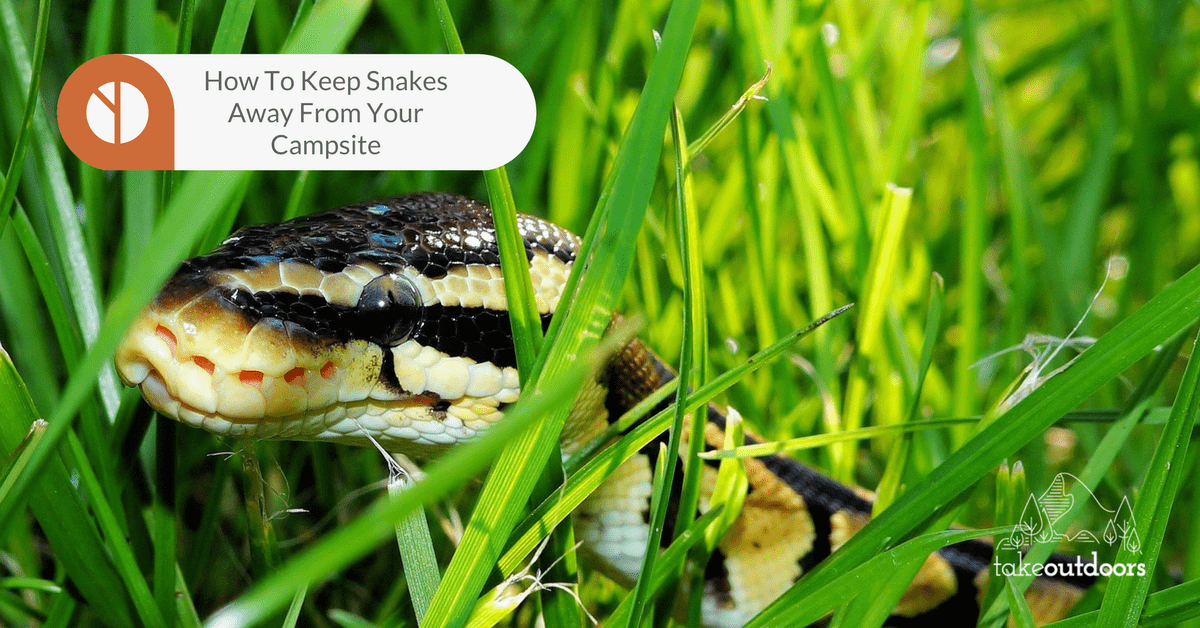We use affiliate links and may receive a small commission on purchases.
Read more about us.
Having a phobia of snakes is one of the most common fears in the world; recent studies believe that this could even be a natural fear instinctive from birth. With this in mind, I’d say a snake probably wouldn’t be the most welcome visitor to your campsite! However, an encounter with snakes is always possible if you camp near their natural habitat. It is therefore best to be prepared, should this ever happen. This guide is full of tips and advice to not only keep snakes out of your campsite but also handle them if you do meet one along the way.
Can You Repel Snakes?
Update: We’ve recently asked the snake expert Doug Hotle, General Curator of the Animal World & Snake Farm Zoo in Texas. He’s also featured in National Geographic Blog so you can trust his words on this.
Our question was: Are essential oils actually effective at repelling snakes? If not, are there any repellents that you think work?
And here’s his answer:
Snakes don’t have the same sense of smell than we do. It’s natural to think that smell that turns us off will turn the snakes off. Unfortunately, this is not the case.
Although there are many products claiming to repel snakes. I wouldn’t recommend trying them out. Some chemicals are harmful to human and it’s not worth the risk.
So you’re probably asking me, what am I suppose to do now then?
Well, choosing your campsite is under your control and Doug has some excellent ideas on that.
Choosing Snake-Free Areas
The best method to keep the snakes at bay is to choose your campsite carefully. These are the areas that you should avoid:
- Areas next to rock piles or outcrops
- Areas with a lot of deadfall and heavy brush. These are prime hiding spots for snakes.
- Areas directly adjacent to water sources. Snakes use these areas to hunt and to travel.
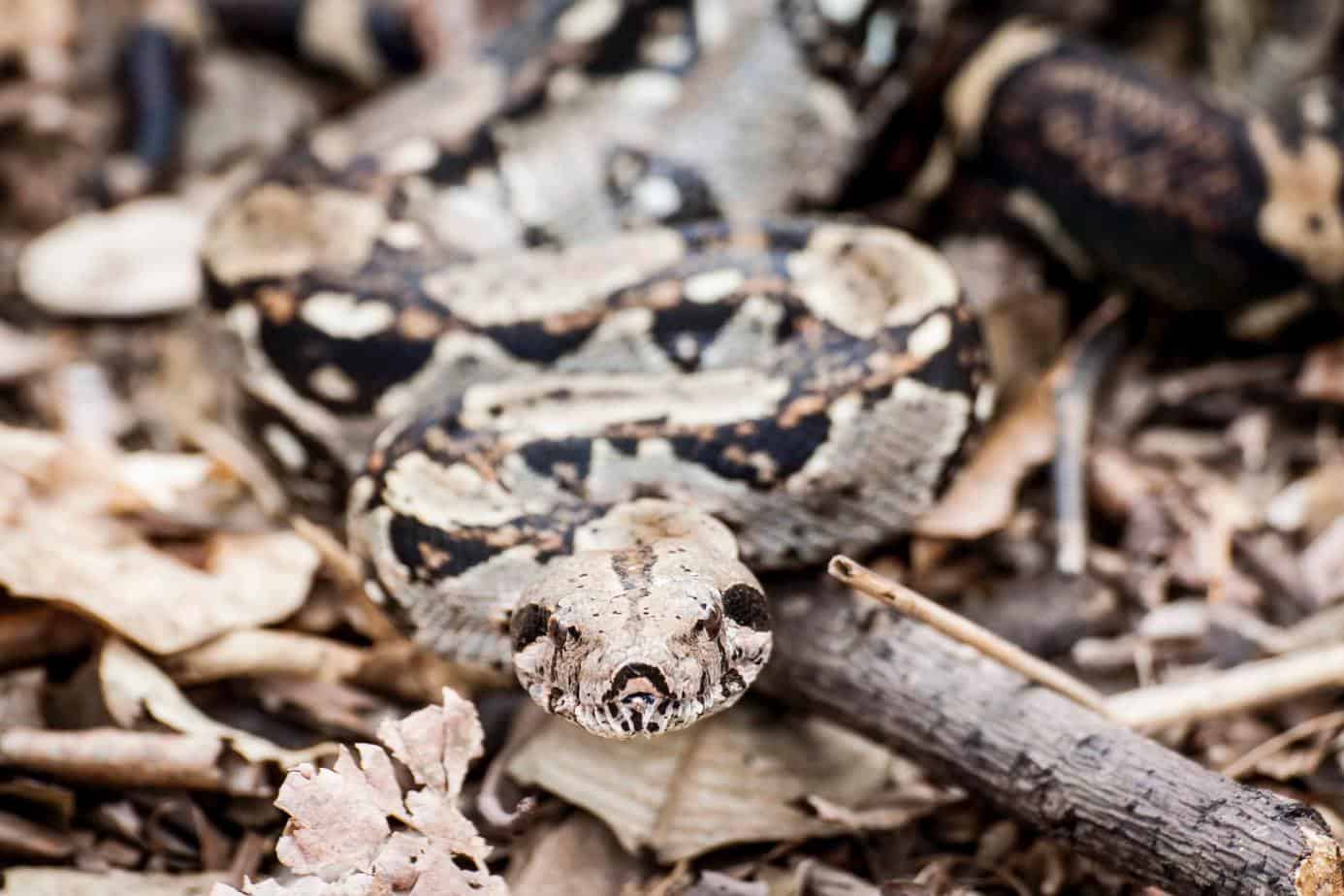
What is the best area for a snake-free campsite?
The best camping spot to camp without your snake friends is an expanse of land with plenty of open space and short grass where it’s more difficult for snakes to hide. Snakes are secretive and tend to avoid being exposed out in the open.
It is recommended to also choose an area that will be well-lit at night. This to ensure you can avoid stepping on them when they are passing through in their travels.
If your campsite permits, lighting a fire is another good tactic to keep rodents and snakes at bay.
How Should I Store My Food?
Even though snakes have little interest in human food, smaller animals like mice and birds do. And snakes have a big interest in them! Storing food incorrectly could, therefore, attract snakes inadvertently. In the same way that you would bear-proof your campsite, the following rules also apply to snakes:
- Never leave trash bags outside of your tent even if they are sealed. Dispose of correctly or store in an air-tight container until you are able to do so.
- Be conscious of dropping crumbs near your tent and clean utensils thoroughly after use.
- Place any leftover food/scraps in air-tight containers and store away from your tent in an elevated area (such as a tree branch) to further protect it from rodents.

How Can I Safely Check for Snakes?
There are a number of things you can do regularly to check for snakes in and around your tent area:
- Make sure there are no holes in your tent by doing a thorough check after set-up. It’s a good idea to carry a repair-kit just in case a branch snags your tent for example.
- Before you leave the campsite, make sure all zips are shut on your tent and there are no small gaps/openings. You should check this whenever you leave your tent unattended even if you are still close by, as it doesn’t take long for a snake to slither in.
- Get into the habit of shaking out your sleeping bag – you don’t want any surprise visitors as you climb inside!
- Snakes are attracted to shade so don’t forget to check underneath your tent too.
- Boots are another potential hiding place for snakes, especially if you leave them outside your tent overnight. Never put your feet in without checking first!
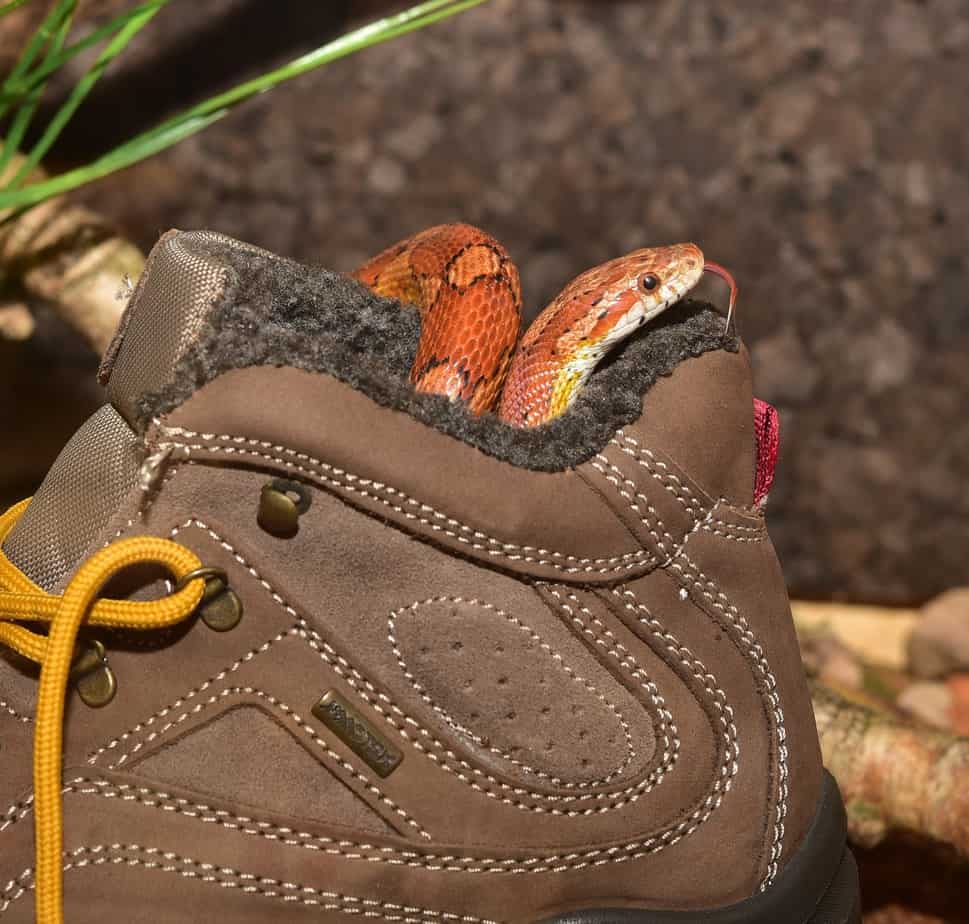
Tips for Personal Safety
As well as snake-proofing your tent area, you should also follow these simple safety tips to prevent encounters outside of your campsite:
Dress appropriately
It is important to cover the ankles, hands and lower legs, as these are the areas most liable to snakebites. You then lower the risk of venom entering the bloodstream should a snakebite occur. Gaiters and jeans are examples of good materials that also reduce the chances of a snake’s fang piercing the skin.
Closed footwear is always essential. Not only will your feet be more protected, but they make more ground vibrations than flip flops or sandals, alerting the snakes to your presence and encouraging them to vacate the area.
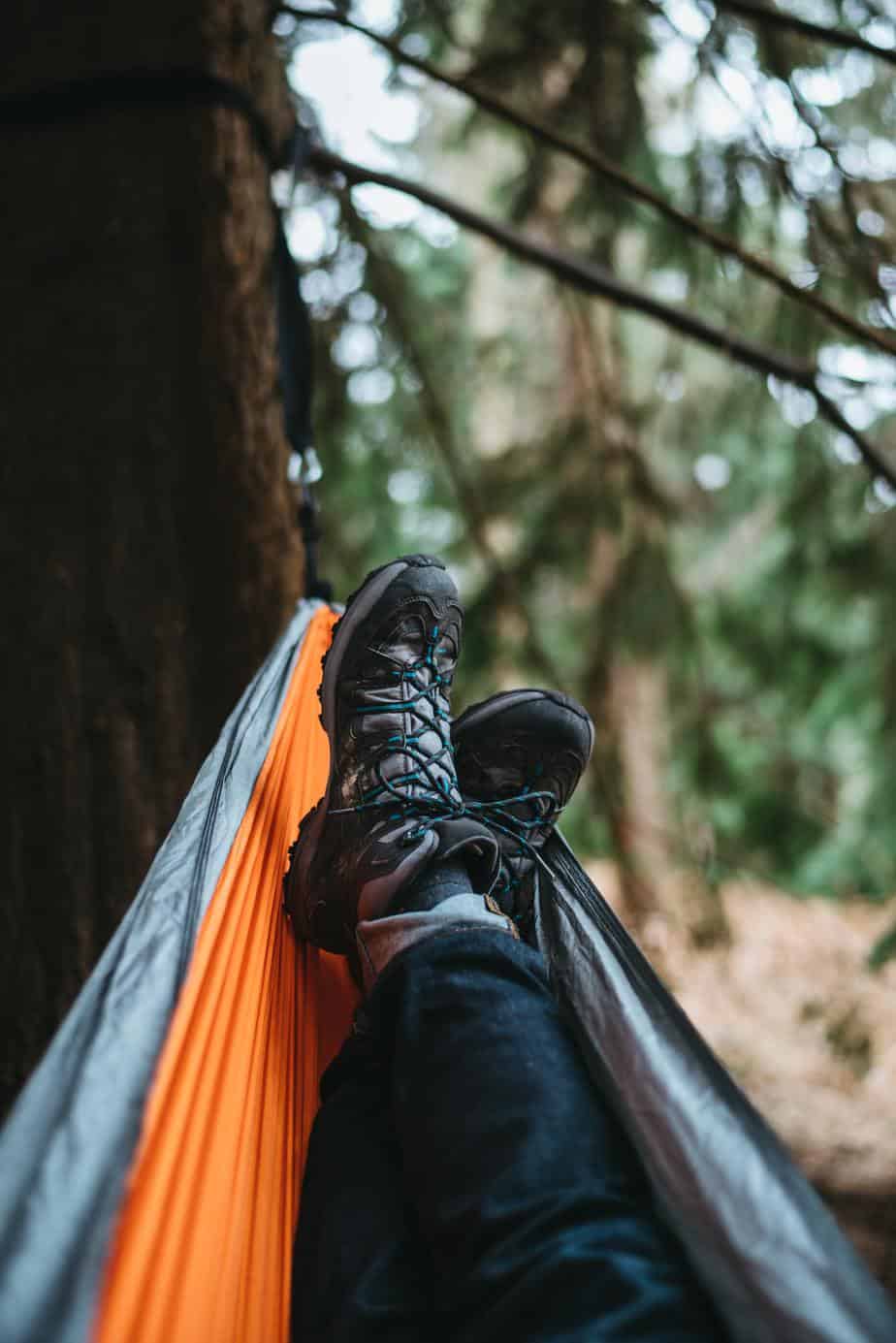
Watch where you walk
Most snakes will feel you through vibrations and leave before you see them. However, in some cases If you catch them by surprise, their instinctive reaction may be to strike out. To reduce these chances, check rocks and logs before you step over them. As you know, snakes like to lay in these places and you don’t want to disturb them where possible.
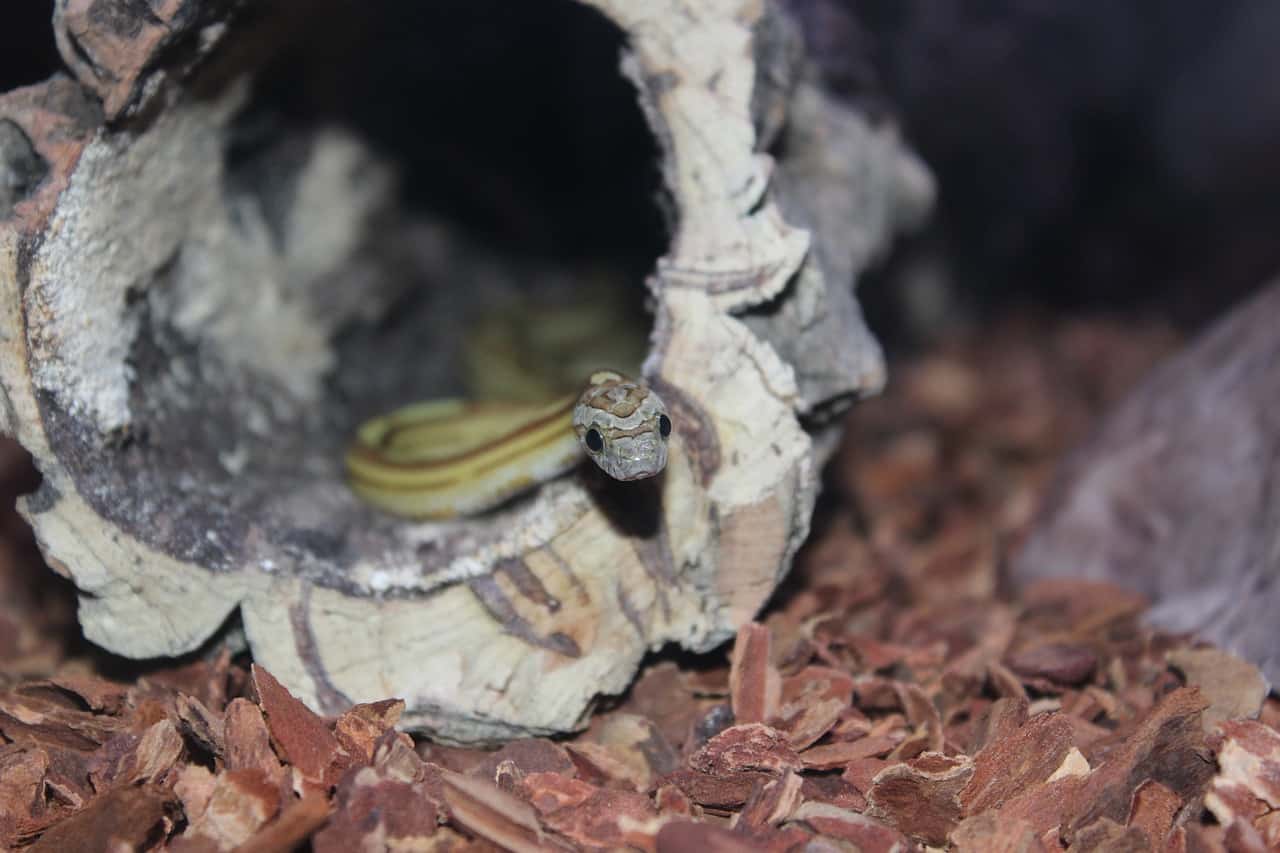
Pack a first-aid kit
It’s always best to be prepared, especially when camping or hiking around snake habitats. First-aid kits are a fundamental item in any backpack. As well as the basics, you should include pressure bandages that can be applied to bites, delaying the venom. Find out more about the pressure immobilization technique here.
What Should I Do If I See a Snake?
If you do come across a snake lurking near your campsite or when out hiking, stay calm and follow this advice:
- If you see a snake in close proximity, freeze and assess its reaction. It will more than likely look for a way out. If it is cornered, back up slowly. Similar to bears, slow movements are seen as less threatening.
- Don’t provoke a snake. This includes poking it with a stick or prodding with your foot to encourage it to move. Snakes can attack quickly if disturbed, even from a distance, as they see this as a threat.
- If you step on a snake by accident, move away immediately.
- Don’t get too close. Some species play dead and may strike if they feel threatened.
- Only stamp your feet if you are a good distance away. This usually alerts the snake and they will vacate, however this can also be perceived as a threat if you are too close.
- You should treat all snakes as dangerous for your own safety. Even if you encounter a dead snake, the fangs still store poison which can cause envenomation if it pierces the skin. They may also retain muscle reflexes, meaning a bite could still occur after death.
- Baby snakes can also be dangerous: they are typically harder to spot and can have an erratic and impulsive nature, leaving their next move unpredictable.
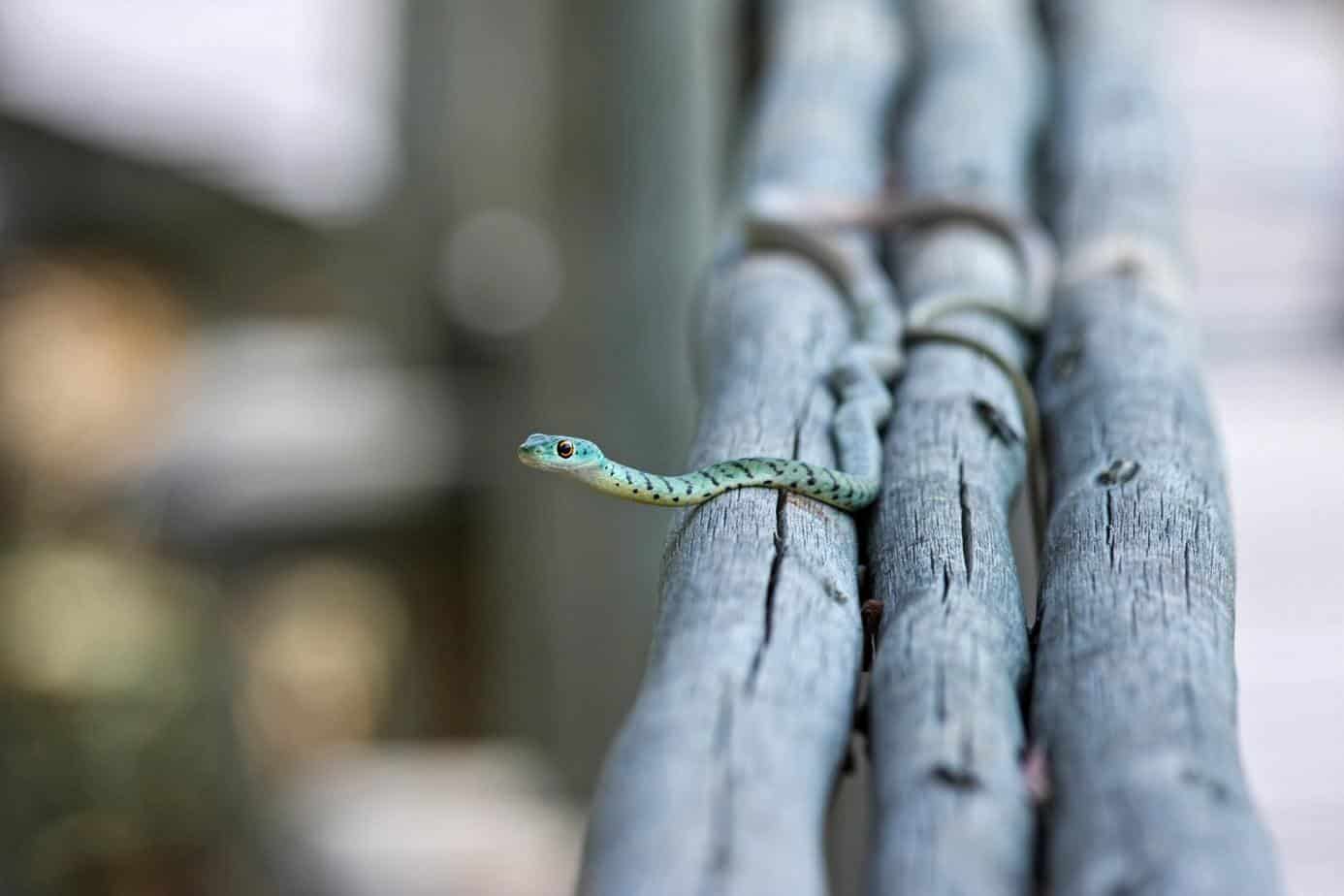
How Do I Treat a Snakebite?
Although snakebites are rarely fatal these days, it is always important to know what to do in this situation in case the bite is indeed life-threatening. You should treat all bites as venomous in the same way you treat all snakes as dangerous.
Do:
- Call 911 for medical assistance.
- Stay calm and still, keeping the affected area below the heart to slow down the spread of poison.
- Remove any restrictive items as the area may start to swell.
- Apply an immobilization bandage as soon as possible, tightly covering the whole limb. Watch this short instructional video to learn the correct technique:
Don’t:
- Try to suck out the poison.
- Apply a tourniquet or restrictive bandage as this can cause serious damage to the limb, nerves and blood flow.
- Clean the wound as the hospital might need to identify the snake using the poison left on the skin.
Which Places in the US are Known for Snakes?
The majority of US states are home to various species of snakes, though not all are venomous. To give you an idea, states with the most venomous snakes include New Mexico (15-20), California (15-20), Texas (20-30) and Arizona (around 30). Generally speaking, more venomous snakes are found in the south compared to the North.
You can check out this interactive map to give you an idea of which snakes can be found in each US state.
Conclusion
Whether you are a recreational camper or a seasoned professional, it is always worth taking the appropriate measures to keep snakes away from your campsite. This guide doesn’t promise protection, but it is useful for you to be fully equipped with this information prior to camping near snake territory. Always remember to tread carefully when walking and be aware of your surroundings.
If you are camping in areas that are also home to bears, you can check out our useful guide on How to keep bears away from your campsite.
Hayley is from the UK and has a passion for the outdoors, taking regular hiking trips with her Australian fiancé. When she is not hiking, she is working as a freelance writer in Glasgow or travelling the highlands in Neil, her campervan.

